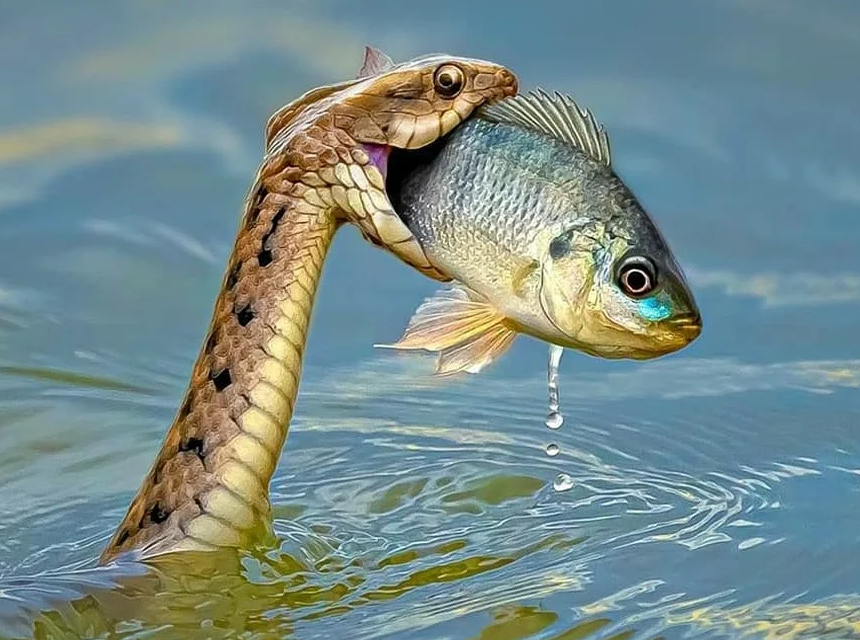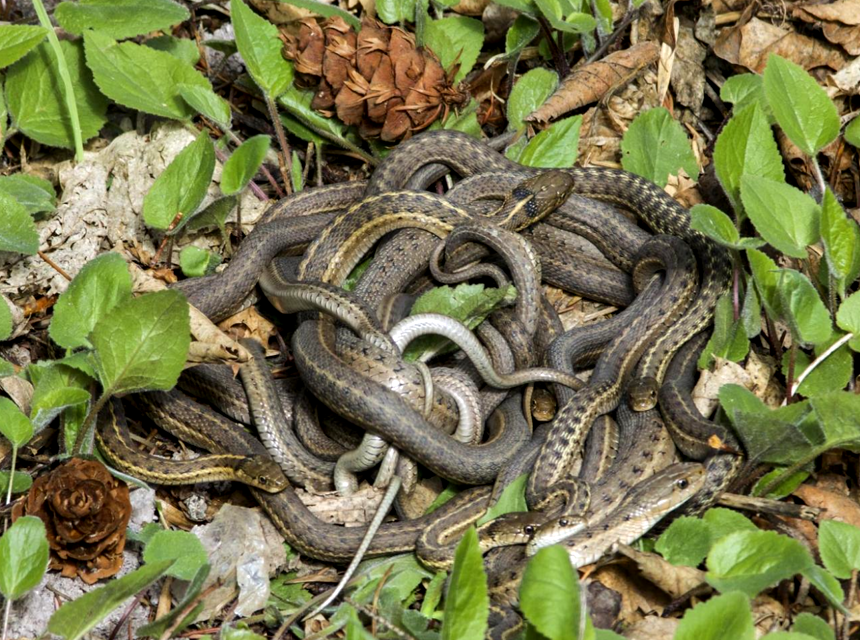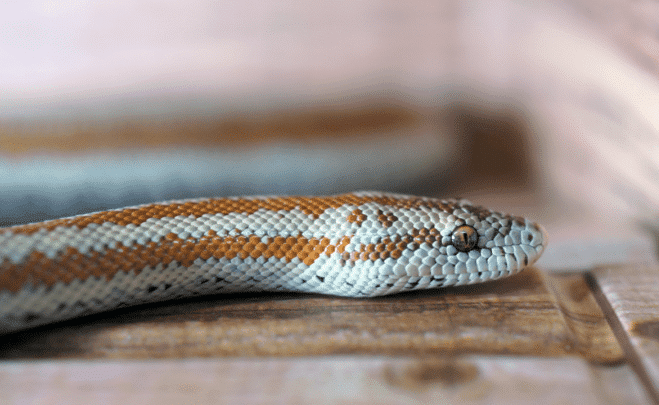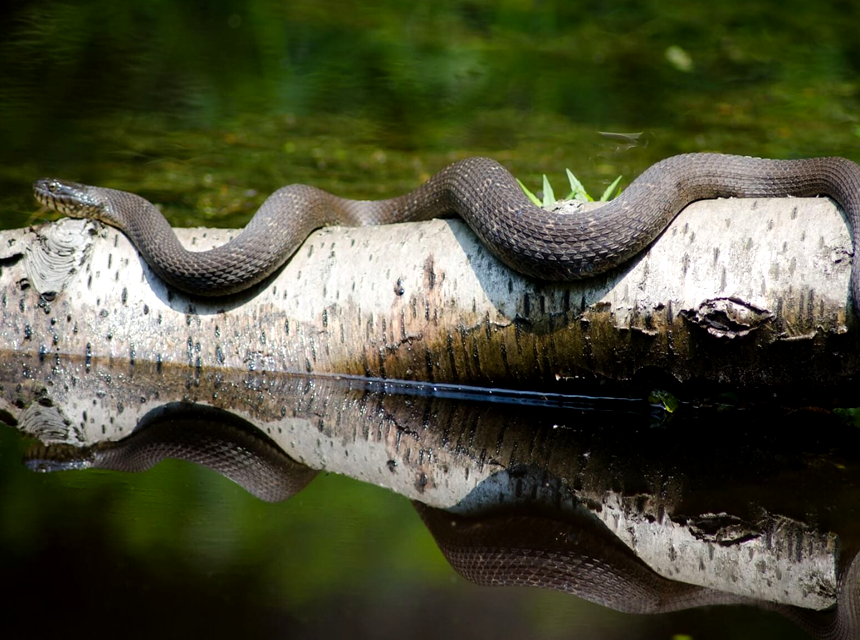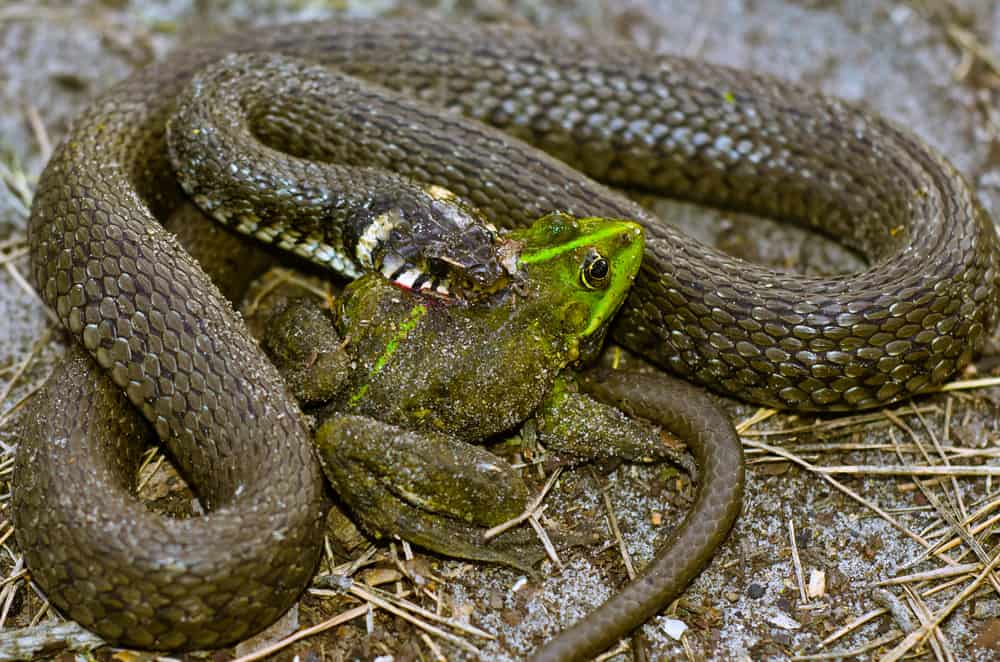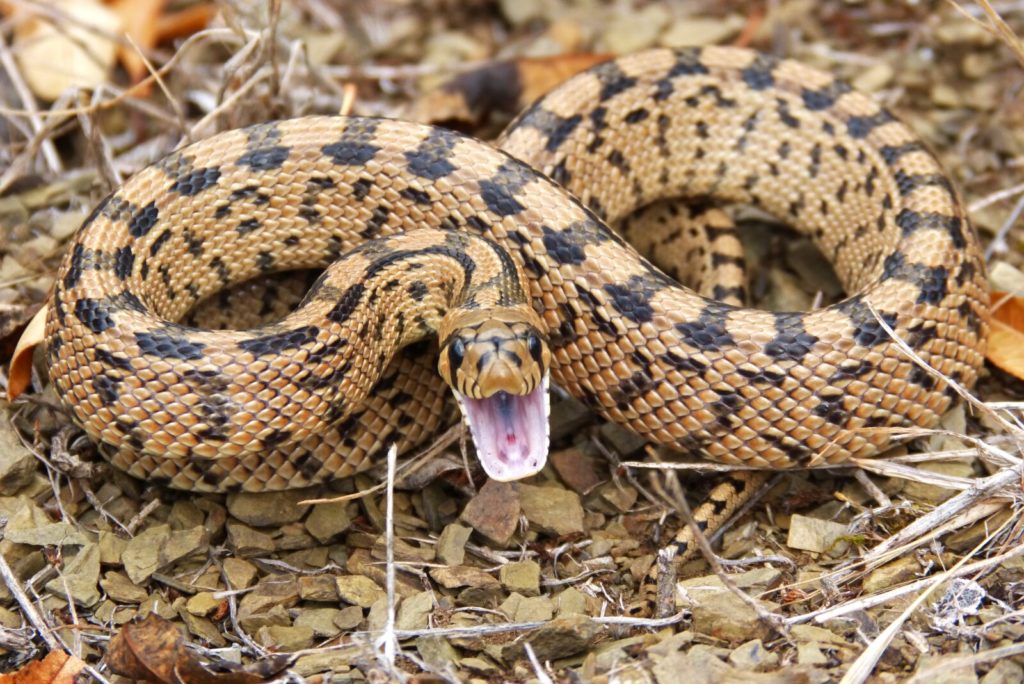

Copperhead snakes are among the venomous snakes commonly found in the eastern and mid-southern regions of the U.S. Although they are not aggressive and will slither away when you approach them, finding a copperhead snake in your yard is scary because it can bite you if you step on it or touch it by accident.
In this pest control guide, we will discuss how to identify them by their features as well as their favorite diet and hiding spots. We will also explain how to get rid of copperhead snakes, including baby copperhead snakes, in your house and backyard. Besides that, we will review various homemade and commercial treatments and their effectiveness in preventing and repelling copperhead snakes on your property.
Although it is common to mistake other species of snakes such as the eastern milk snake and corn snake for a copperhead due to similar hues and patterns, it is actually easy to identify copperhead snakes once you know what to look for because they have a distinctive appearance. Knowing the features and traits that sets them apart from other snakes will help you understand how to get rid of snakes in your house and prevent their return.
Baby copperheads are slightly gray in color and they have a yellow-tipped tail. However, the body of an adult copperhead snake is reddish brown to yellowish bronze on the back and sides with a pink underside, a row of scales and dark crossbands along its body with patterns that resemble an hourglass. The hourglass-shaped patterns, muscular body and the triangular, copper-colored head are the most distinguishing features of copperhead snakes. The color allows the copperhead snake to camouflage and blend into an environment.
Copperhead snakes also have a sensory pit Trusted Source Eastern Copperhead | Missouri Department of Conservation The eastern copperhead is the most common venomous snake in Missouri. Its color varies from grayish brown to pinkish tan, with distinctive hourglass-shaped crossbands. mdc.mo.gov on their head to help them find prey in the dark. The organ that detects the heat signals that mammals emit is located between the eyes and nostrils of a copperhead snake.
Other features that can help you identify and get rid of copperhead snakes in a yard include a broad muzzle, vertical pupil and irises that are reddish brown or orange in color.
If we compare some of the common snake species to copperhead snakes, we find that corn snakes are thinner with straighter crossbands, eastern milk snakes have a more vibrant color and eastern hognose snakes are defined by their upturned stout.
Baby copperhead snakes are 7 to 10 inches long and they grow up to a length of 24 to 37 inches as adults. Female adults are generally longer compared to male adults despite having shorter tails.
The main reason we have included tips on how to get rid of baby copperhead snakes is because they are just as venomous as adults since they are born alive with fangs that can inject venom if they bite you. The normal bite of copperhead snakes is rarely fatal since they mainly inject small doses when they bite humans as a warning when threatened, but it could cause necrosis and damage to your tissues and bones if it is a severe bite. Their bite can be particularly dangerous for children, seniors, pets and individuals with autoimmune disorders.
According to the Centers for Disease Control and Prevention Trusted Source Venomous Snakes | NIOSH | CDC A venomous bite is called an “envenomation.” Although death from venomous snake bites is rare, a worker with a severe envenomation or allergy to snake venom can die from a venomous bite www.cdc.gov , at least 7,000 are bitten by venomous snakes in the United States and 5 of them die. People who are severely allergic to snake venom can die or suffer long-term injuries and disability if bitten by a venomous snake such as copperheads and rattlesnakes.
A copperhead snake will bite you in self-defense when it is in an arched position, but only if you confront it and do not heed its warning. It will warn you by twirling its tongue, releasing musk and vibrating the tip of its tail. Otherwise, the snake is non-confrontational to humans and will move away from you if possible.
In order to learn how to trap a copperhead snake, you need to be familiar with its behavior, habitat and eating habits so you can find them in the areas they frequent. Copperheads give birth to two to ten baby copperhead snakes and then gestate for three to nine months.
Copperhead snakes take about four years to become an adult and they have a relatively long lifespan of up to 18 years.
Baby copperhead snakes feed on caterpillars and other insects whereas adults feed on mice, rats, frogs and small birds.
Copperhead snakes can live in a variety of surroundings. You can find copperhead snakes under your house seeking shelter underneath sheet metal or boards, or outside along your walls, garden or yard.
However, copperhead snakes prefer hiding in areas with tall grass, mulch, large rocks or a lot of wood that can provide a good cover as well as prey such as rodents for them. You will also find copperhead snakes in marshy areas with streams and ponds because they are good swimmers and they also prey on frogs.
We would strongly advise you not to kill copperhead snakes at first sight. There are better ways to deal with them, such as with Snake Guard Snake Traps, and we will discuss these methods further in this guide. Meanwhile, let’s talk about how you can remove them from your property.
The main thing that attracts copperheads to a particular area is food and shelter. So, the first step to get rid of copperhead snakes under the house or in the backyard is to eliminate their food source. This means not leaving any leftover food in the open where it can attract insects, birds, rodents and lizards for a copperhead snake to feed on.
After removing their food source, you should also remove their hiding spots by clearing mulches and only keeping short grass. However, since they can shelter in various places, you might still find one or a couple of them inside and outside your property. We recommend spraying a repellent like Dr T’s Snake Away in your yard and other possible areas they could be hiding. The product contains sulfur and naphthalene which have an odor that will repel copperhead snakes and force them to move to another destination. It works by aggravating their sense of smell.
Remember to wear gloves and to treat the area again in case there is heavy rain.
Another solution for getting rid of copperhead snakes in or under the house is ammonia or white vinegar. You should use them in diluted form and avoid spraying them on plants.
Research also shows that garlic and cinnamon oil are effective homemade copperhead repellents with a strong odor that confuses and deters snakes.
If you find a copperhead snake in your yard, there are a number of ways to deal with the situation.
Soaking cotton balls in some of the homemade copperhead repellents we have mentioned and then placing them in areas where the snakes is a simple deterrent that works although not as well as traps and some commercial products. Besides that, you cannot use some of the DIY treatments on plants but you can do so with others; according to this Ortho Snake-B-Gon review, you can use the repellent around plants if the crops are underground.
Instead of killing copperhead snakes, we recommend catching them with a trap and then releasing them in a faraway location. You can call animal control to help you with that.
Glue traps vary in size and they are available with baits. You line the floor of the trap with glue that makes the snake stick once it crawls inside. Some are reusable to allow you to free the snake by pouring oil over it and others are single-use products designed to be thrown away with the snake.
Another great alternative to get rid of copperhead snakes in a yard is with a minnow trap that uses eggs as bait. The cylindrical-shaped traps have holes on both ends that catch a copperhead snake because the holes invert into the trap. So, when the snake crawls in, it cannot come out unless you release it.
Take great caution when transporting or releasing the snake; avoid poking it or shaking the trap, and keep a good distance when it crawls out. Wearing the best snake gaiters will also add another layer of protection against any bite.
Create a hostile environment by eliminating food and water resources to get rid of copperhead snakes under a house. That includes exterminating insects and rodents that serve as prey for the snakes.
Cut tall grass and check and remove leaves, woodpiles, standing water, tall grass and large rocks that could be hiding spots for copperhead snakes and their prey. If you must have woodpiles, keep them high above the ground. Also, seal entry points such as your shed, garage or house.
There are certain plants with a strong smell that you can use to get rid of baby copperhead snakes in your yard. You can plant mint, lemongrass, citrus, mugwort, or garlic as a homemade copperhead repellent.
A mesh face with small openings that are up to 1.4 inches wide will also prevent copperhead snakes from getting into your backyard.
The following are the questions we often receive from our readers.
The way you get rid of copperhead snakes in the house is the same for baby copperhead snakes. Some methods we have listed are eliminating food, water and hiding spots for them, using snake traps and using homemade copperhead repellents such as ammonia, garlic or white vinegar.
Of course, but are you sure you can kill it and escape unscathed? Unless you are trained for it, the best step is to get rid of the copperhead snake with the tips we have featured. There are also professionals that will assist in capturing and relocating the copperhead snake.
No one wants to come across a copperhead snake under their house or in their backyard. However, they can be drawn to your property by rodents, lizards, insects and other prey such as frogs if there is a pond nearby. Copperhead snakes are also attracted to woodpiles, tall grass and swampy areas since they are also a favorite location for some of their prey. We have explained how to get rid of copperhead snakes by removing their food source and shelter or by ensnaring them with traps. You can also install a snake fence or plant certain plants like mint with a smell that is repulsive to copperhead snakes. Whatever you do, do not attempt to kill a copperhead snake because although it is not aggressive, it has a venomous bite.
